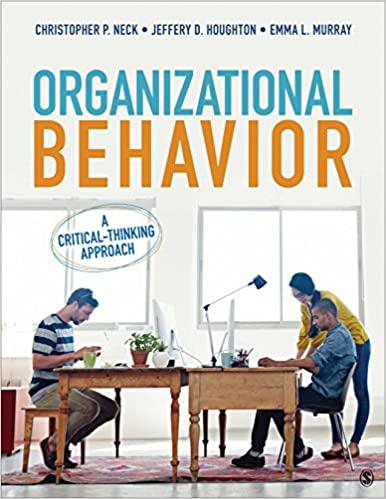Depending on whom you talk to, Monsanto Company, the chemical and agricultural biotechnology multinational based in Creve
Question:
Depending on whom you talk to, Monsanto Company, the chemical and agricultural biotechnology multinational based in Creve Coeur, Missouri, is either the “devil incarnate” or the answer to some of humanity’s most vexing problems. Do a quick Google search and you’ll find a wide array of opinion in articles with titles ranging from “Monsanto Named 2013’s ‘Most Evil Corporation in New Poll” and “Monsanto Connected to At Least 200,000 Suicides in India throughout Past Decade” to “One of CR magazine’s 100 Best Corporate Citizens for 2014” (CR stands for Corporate Responsibility). One thing is for sure: Monsanto is a powerful force on the world stage, with more than 22,000 employees, $14.87 billion in annual sales, and heavy political clout in the United States and beyond.
And it’s everywhere. “Like Intel’s dominance in the chip market, almost every soybean in America has Monsanto inside,” wrote Scott Tong on Marketplace.org. Soybeans are the second-largest US crop after corn—they cover nearly a quarter of the country’s farmland—and Monsanto is responsible for planting and harvesting about 90 percent of the nation’s crop. The animals that produce our milk, eggs, meat, leather, gelatin, and wool feed on soybean meal. About 60 percent of the vegetable fats found in processed human food are soy based, too.
Monsanto’s agricultural dominance can be traced in part to 1983, when it became a pioneer by genetically modifying a plant cell to become hardier. This was part of a wider GMO movement that for some “constitutes a massive experiment on the planet, with potentially devastating effects on human health and the global environment,” as columnist Adam Kapp wrote in 2002. But that innovation, among others, has helped Monsanto produce soybeans cheaply and reliably to feed a growing global population.
Monsanto is also an innovator in pesticides, among other chemicals and technologies. Founded in 1901, over the years the company has led breakthrough research on catalytic asymmetric hydrogenation and light-emitting diodes (LEDs) and produced the insecticide DDT, PCBs, Agent Orange, and bovine growth hormone.
Borrowing from biotechnology’s and the pharmaceutical industry’s playbooks (its founder was a pharmacist), Monsanto spends millions on R&D and biological patents, making much of its money back (and then some) on its patents’ reuse. Today, the company is both revered and reviled for its influence in the soybean trade and for the production of Roundup, a powerful pesticide the company insists is safe. Its introduction of the herbicide Roundup-ready Soybeans—meaning farmers can spray their fields to keep away the pests while theoretically keeping their Monsanto soybeans safe—unleashed even louder protests from environmentalists and the organicand small-farmer movements in 2000 that continues today.
Why all the fuss? The world’s population is growing at an unprecedented rate, and determining how to feed everyone is essential to our survival—which Monsanto claims is one of its core goals. But detractors say that GMO crops are nutritionally inferior and hazardous to humans and the environment. Scientists mostly agree that genetic engineering is also leading to the growth of “super” weeds and pests that withstand not only Roundup but any pesticide.
Author Bret Frazer, on The Northern Light.org, explains why Monsanto is not just “bad” but “evil”: “Monsanto . .
. epitomizes the undermining of democracy. Monsanto is an example of revolving door politics.” He points out that Supreme Court Justice Clarence Thomas worked as a Monsanto attorney in the 1970s. In 2001, Thomas wrote the majority opinion for J.E.M. Ag Supply, Inc. v. Pioneer Hi-Bred International, Inc., which found that “newly developed plant breeds are patentable,” allowing GMO producers like Monsanto to make billions from generations of seeds and sue those farmers who did not abide by strict patent-protecting policies. Linda Fisher, Monsanto vice president from 1995 to 2000, was made deputy administrator of the EPA (Environmental Protection Agency) in 2001. Michael Taylor was once employed by a law firm that lobbied for FDA approval of Monsanto’s artificial growth hormone. President Barack Obama reappointed him deputy commissioner of the FDA (Food and Drug Administration) in 2009. In “Why Is Monsanto Evil, but DuPont Isn’t?,” Stephen D.
Simpson of The Motley Fool reports that when corporate lobbying “Monsanto does indeed spend millions . . .
around $5 million or $6 million a year by most reports.” But it is certainly not the first major corporation whose executives have made the transition to the federal payroll.
Questions 1. Describe how Monsanto became so powerful in the chemical and agricultural biotechnology industry.
2. Describe how Monsanto uses organizational power.
3. What sort of power do environmentalists and other activists hold in their fight against Monsanto’s policies? Where does it come from? How can they best use or increase their power?
4. Describe Monsanto as an example of revolving door politics and the way it gives the company additional organizational power.
Step by Step Answer:

Organizational Behavior A Critical Thinking Approach
ISBN: 9781506314402
1st Edition
Authors: Christopher P. Neck, Jeffery D. Houghton, Emma L. Murray





